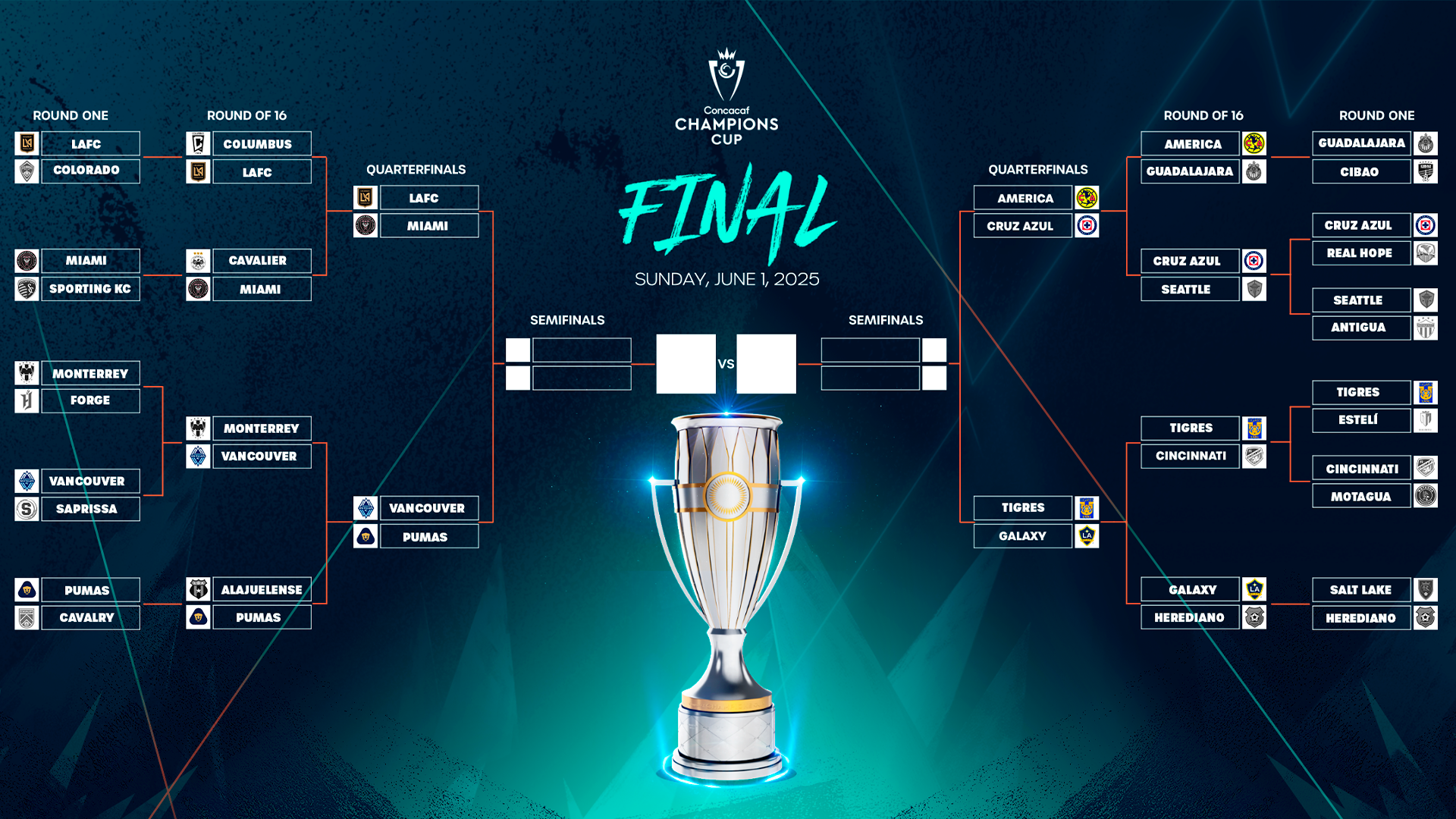CONCACAF Champions League Stats - What They Mean
Talking about football in our region, it's pretty clear that when folks get together to chat about the CONCACAF Champions League, the numbers and stories that come out are often the heart of the conversation. These discussions, you know, they really get into the nitty-gritty of how teams stack up, what makes a league strong, and where the game is headed. It's not just about who won or lost, but what the bigger picture tells us about the sport's health here, more or less.
These sorts of chats, like the one Dan Kohner got going about the Gold Cup back in June of 2023, often touch on all sorts of things. We hear about specific plays, referee calls, and the overall feel of the competition. It’s all part of how we make sense of the football scene, and how we decide what’s working and what could use a little push, so.
From the buzz around youth tournaments, like the CONCACAF U15 Championship that's set to kick off in the Dominican Republic this August, to the ongoing talks about refereeing decisions in big matches, every bit of information adds to our collective picture of football's progress. It’s actually pretty interesting to see how all these pieces fit together, like your favorite team’s season, perhaps.
- Ka Moana Luau
- Woodridge Hollywood Blvd Movie Theater
- World Wildlife Zoo Litchfield Park Az
- Frank And Son Collectible Show
- Manor College
Table of Contents
- What Shapes CONCACAF Champions League Stats?
- Youth Football's Role in Future CONCACAF Champions League Stats
- How Do Leagues Compare for CONCACAF Champions League Stats?
- The Quest for Stronger CONCACAF Champions League Stats
- Evolution of Tournament Formats and CONCACAF Champions League Stats
- Fair Play and Refereeing in CONCACAF Champions League Stats
- Examining Specific Moments in CONCACAF Champions League Stats
- The Core Purpose Behind CONCACAF Champions League Stats
What Shapes CONCACAF Champions League Stats?
When people get together to talk football, especially about big tournaments, they often bring up specific points that really get the conversation going. Take, for instance, the Gold Cup discussion that Dan Kohner started in June 2023; it was a spot where folks could share their thoughts and even challenge ideas, you know? Someone might say, "Tell me where I'm wrong," and that opens up a lively back-and-forth about how things are going on the field.
These conversations, quite often, revolve around particular details. There was a mention of "losing the link to Taylor," which, while a bit of a specific point, shows how important every piece of information is when we're trying to figure out what’s happening in a game or a competition. It’s these little bits of data, or even the lack of them, that can really shape how we see the overall CONCACAF Champions League stats, like your team’s win-loss record.
Youth Football's Role in Future CONCACAF Champions League Stats
Looking ahead, the development of younger players is a big deal for the future of football in the region. We recently got the word that the CONCACAF U15 Championship is indeed happening, set to begin on August 6th in the Dominican Republic. This news is pretty exciting, as it means more chances for young talent to show what they can do, so.
- Osbourn Park High School
- Brandon Exchange
- Studio Movie Grill Bakersfield
- Scape Park
- Trustees Of Reservations
The groups for this youth tournament will be announced pretty soon, which will get everyone talking about who's playing whom. The general feeling is that this championship will be "a good" thing for the sport. It's about giving these younger athletes a platform, and in a way, it lays some groundwork for what we might see in future CONCACAF Champions League stats, as these players grow up and perhaps join top clubs.
How Do Leagues Compare for CONCACAF Champions League Stats?
There's often a bit of chatter about the different professional leagues within the CONCACAF area and how they stack up. Someone might point out, as a Canadian friend did, that outside of LigaMX and MLS, the other professional leagues in the region are, in some respects, quite similar to many other pro leagues elsewhere. This often suggests a certain level of competition, or perhaps a gap, compared to the top two, very.
This observation brings up a key point about the overall strength of the sport here. If a few leagues are seen as being on a different level, it naturally affects the competitive balance we see in the CONCACAF Champions League. It’s like saying some teams have a bigger head start before the whistle blows, which, you know, can really change how the games play out.
The Quest for Stronger CONCACAF Champions League Stats
Many folks agree that for football in the CONCACAF region to truly get stronger, more of the top clubs from various leagues need to be playing against the very best teams this area has to offer. This idea is pretty straightforward: better competition makes everyone better, right? It's about pushing the boundaries and seeing what happens when the stakes are high, too it's almost.
When more strong teams are consistently facing off, it not only makes for more exciting matches but also raises the overall standard of play. This kind of consistent, high-level challenge is what many believe will ultimately lead to more impressive and competitive CONCACAF Champions League stats across the board, making the tournament a truly compelling spectacle for fans, basically.
Evolution of Tournament Formats and CONCACAF Champions League Stats
Discussions about tournament structures are pretty common, especially when we talk about big competitions like the Champions League. There's always talk about how the format affects the games. For example, there was a point made about how the "champions league group stage format wasn't" always the way it is now, or perhaps there was a debate about a proposed change that didn't happen, or.
Changes, or even just talks about changes, to how a tournament is set up can have a real impact on how teams prepare, how they play, and ultimately, the numbers they put up. A different group stage arrangement, for instance, could mean different opponents, different travel, and different levels of pressure, which all affect the CONCACAF Champions League stats we see at the end of the day, pretty much.
Fair Play and Refereeing in CONCACAF Champions League Stats
The role of officials in football is always a hot topic, and it's no different when we talk about big events. We saw a discussion about the 2025 CONCACAF Gold Cup referees, started by MassachusettsRef in June 2025, which shows just how much attention these decisions get. It’s a part of the game that everyone watches closely, as a matter of fact.
People like Paul Calixte, mentioned in a general discussion from December 2023, often become part of these conversations when specific calls are debated. Every decision made on the field, particularly by the officials, can shift the flow of a game and, by extension, affect the CONCACAF Champions League stats. It’s about how those moments play out and what they mean for the final result, you know.
Examining Specific Moments in CONCACAF Champions League Stats
Sometimes, a single moment in a game can spark a lot of conversation and analysis. Think about the discussions that might come from something like "8,220 USADCU Jun 6, 2024," which sounds like a specific event or a piece of data that got people talking. When we look at CONCACAF Champions League stats, it’s often these individual plays that stick in our minds and get dissected, kind of.
Consider the example of a player's "first yellow at 16'." The context around that moment, like "because contact is low, it saves him in this day and age (and, well, it was the first card at 16')," really shows how much thought goes into understanding referee decisions. These specific instances, whether they lead to a card or not, contribute to the overall narrative of a match and can influence the outcomes that eventually become part of the CONCACAF Champions League stats, like your favorite team’s possession numbers.
The Core Purpose Behind CONCACAF Champions League Stats
At its heart, CONCACAF has a clear job: to govern, to help grow, and to spread the game of football within its region. This means more than just organizing matches; it’s about building the sport from the ground up, so to speak. While "professional football isn't explicitly stated" as part of its core mandate, the idea of "competitive international club competition" certainly is, and that’s where the Champions League really fits in, basically.
The numbers and figures we see from the CONCACAF Champions League stats are more than just scores and standings. They're a way to measure how well the organization is doing in its mission. They show us where the game is strong, where it might need a bit more support, and how the region's football is progressing on the world stage. It’s about making sure the sport keeps moving forward, really.
In this discussion, we've explored how various elements, from youth development and league comparisons to referee decisions and tournament formats, all contribute to the rich tapestry of CONCACAF Champions League stats. We've seen how conversations among fans and experts alike help us make sense of the numbers and understand the true state of football in our region. These discussions, sparked by events and observations, ultimately point to the ongoing efforts to strengthen and promote the beautiful game throughout CONCACAF.

Bracket

Leon vs Tigres UANL – Semi-Final – Preview & Prediction | 2023 CONCACAF

2021 Scotiabank Concacaf Champions League Quarterfinals schedule confirmed